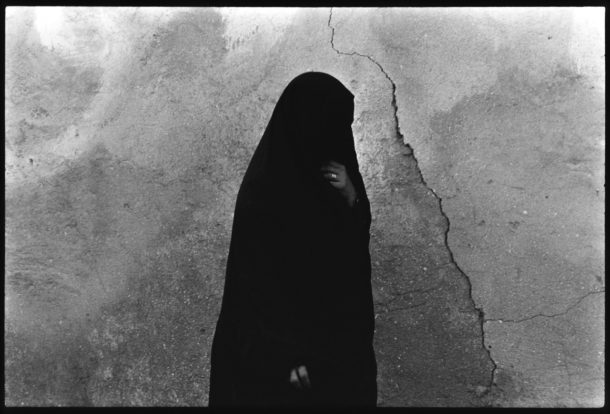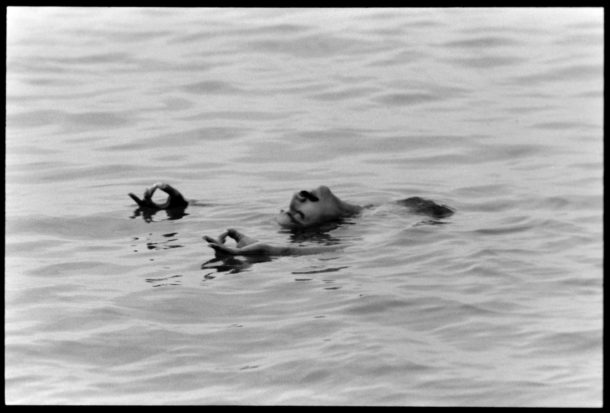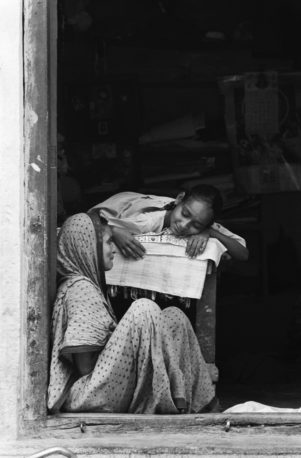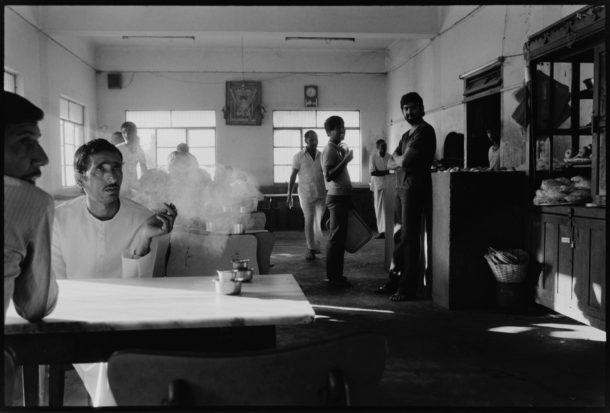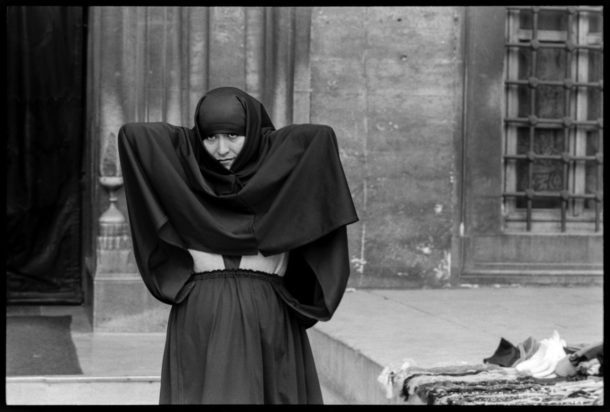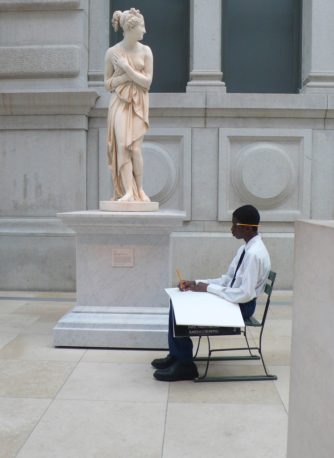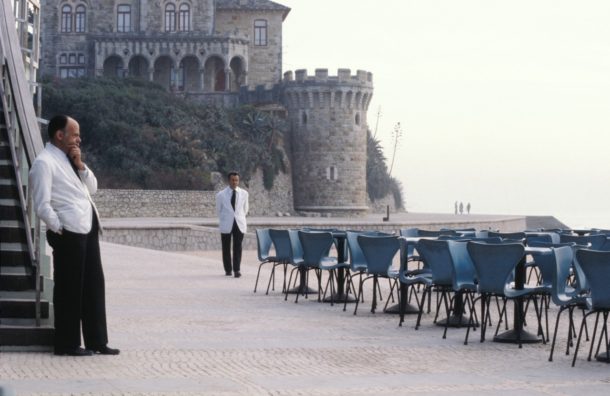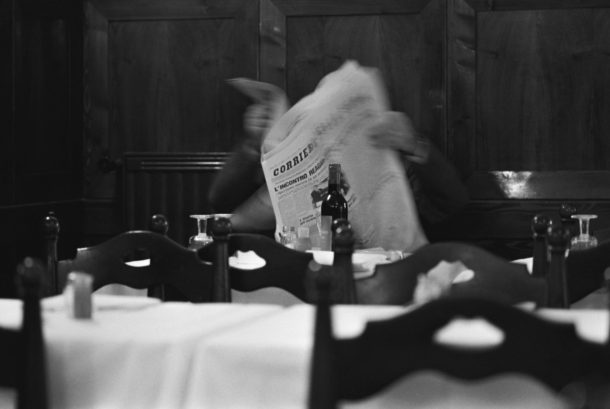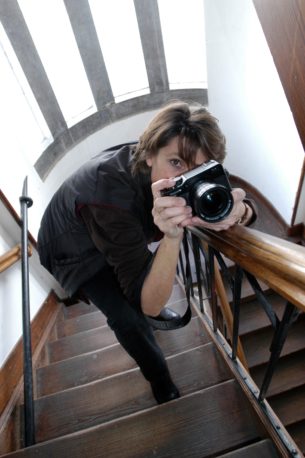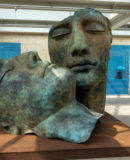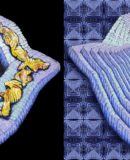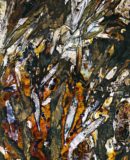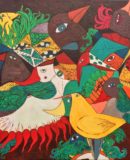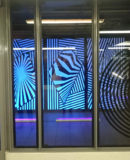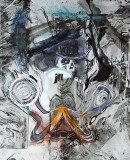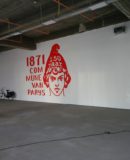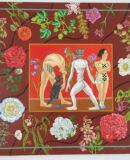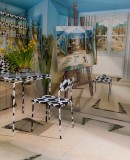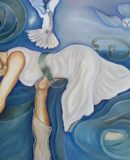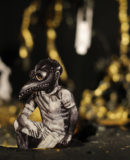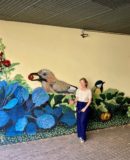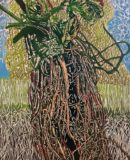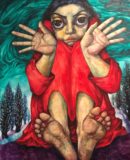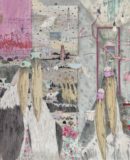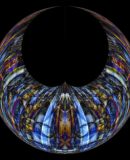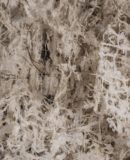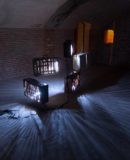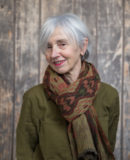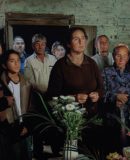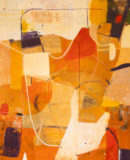World Fine Art Professionals and their Key-Pieces, 444 - Marijke Bresser
World Fine Art Professionals and their Key-Pieces, 444 – Marijke Bresser
In the autumn 2023 exhibition of Sandvoort Gallery on the Korte Vijverberg in The Hague, I saw a few intriguing photos of women from India and Italy by Marijke Bresser.
I went to see her in her studio in Amsterdam, in Werkgebouw Het Veem, a renovated former squat (once a warehouse for coffee, cocoa and tobacco) on the Western Docklands, with a beautiful view of the IJ and Amsterdam North.
The whole negative
She keeps her self-printed photos in a passe-partout in a number of boxes, which we are going to look at. ‘This gives you a good impression of my work.’ She has traveled a lot. We see photos from all over the world. A group of people on a train in Togo, waiting waiters in Portugal, a veiled woman in Dubai, a mother and child in the old town of Barcelona. The prints are almost always from the entire negative. “The framing is already done when I look through the viewfinder,” she says, “not afterwards.”
We look further. A cityscape in New York, schoolchildren in Karachi, a bathing, meditating man in the Ganges, an indigenous family on the Festival of the Sun in Peru, a man with a newspaper in a restaurant in Rome.
Dancer, stewardess, photographer
Marijke Bresser started her working life as a ballet dancer and was part of the National Ballet. ‘From the age of six or seven, the focus was on dancing. I danced in Giselle, among others, in the corps de ballet.’ At the age of 22 she realized that professional dancing did not suit her character. A defining moment in her life. After some wanderings, she soon became enthusiastic about a new career in photography.
In 1975 she started working for KLM as a freelance stewardess attendant. It wasn’t stop and go then. ‘You spent a few days in New York, four days in Bangkok, three days in Tokyo, a great luxury, but also adventurous. Immediately upon arrival I immersed myself in local daily life. My camera became my traveling companion.’
‘In 1978 my husband and I traveled through North and South America for a year. The photos appeared in a report, my husband wrote the story. As a result of this trip I had my first exhibition, at Kodak in Odijk. From that moment on, photography started to play an increasingly important role.’
The photography world was dominated by men at the time, but she found her place and held her own. At that time, the magazines still paid well. She has published in Avenue, Viva, HP/De Tijd, Panorama and Cosmopolitan, among others.
Documentary photography
‘I have taken many side paths in photography, travel photography, portraits, sometimes assignments for companies, but my heart lies in free, documentary photography. The outside world is my domain. In that sense I am a street photographer, but a landscape where a single figure walks is also a street for me. I certainly make contact with people, but keep my distance, and also try to capture the elusive side of street life.’
The Indian period
When asked whether Marijke Bresser has a key work, she says: ‘Not so much a key work, more a key period. Between 1984 and 1989 I traveled extensively through India. Every year for two months, alone, almost always by public transport. I was blown away. It was a completely different world. I had an enormous drive to get to know the country. I wanted to experience it physically and let the country penetrate my soul. I not only captured the poverty and misery of India, but looked in that harsh reality for the little happiness, the self-esteem, the magic of the country. Without disguising the reality. In India I learned to look and that is where my way of photographing took shape.’ It left her with lifelong friendships. She was invited to several Indian weddings. She also filmed one of those weddings, it was released as “The Bride & the Cell Phone.”
Commissioned photography
One of the side paths she took was commissioned work for the Government Buildings Agency (1% scheme) and other agencies. For, among other things, the Leeuwarden penitentiary. ‘I immersed myself in the elements of nature, a look outside. Something that prisoners are forced to do without. It was a journey of discovery, I made a leap from the traditional passe-partout, it became more abstract and spatial.’ She made collages of reed fields for the Nederlandsche Bank. There was also a commission for the hall of the Waterland town hall. She made work for the Lucas Andreas Hospital, now OLVG West. In one of the corridors hangs a large tree stump, part of a tree series, “Into the Woods”, with the tree as a metaphor for the cycle of life. The assignment now hangs in the psychiatric outpatient clinic with a poem by Leo Vroman.
Filming
She started filming in the late 1990s. She received a grant from the Amsterdam Fund for the Arts to bridge the gap between photography and film. The theme of ‘reed field’ returned. She made a short film about the reed landscape near her hometown of Uitdam in Waterland. ‘Rietveld’ is a film about ‘the moods’ of the landscape. She was inspired by the work of Johan van der Keuken. ‘I filmed with an old 16mm camera of his. I borrowed the camera through the filmmaker Frans van de Staak. He allowed me to edit my film at his place. Then still on the editing table. ‘
GKf / DuPho
Johan van der Keuken was a member of the GKf. The GKf was a professional association of photographers that stands for social commitment, in the tradition of the founders Cas Oorthuys, Emmy Andriesse, Eva Besnyö and Carel Blazer. This translates into mentality – the way of working and looking at the world – and into artistry. Today it is part of DuPho. Marijke has been a member of the GKf/DuPho for a long time and is attached to the meetings. ‘The association was born from the resistance. It is now important that young photographers also become members. That’s getting better and better. The balloting used to be stricter, but now it’s about a new generation finding a connection.’
Cream gardens (De Roomtuintjes)
She also feels related to the work of Kors van Bennekom, chairman of the GKf for a while. “He captured his family life. That is also an important subject in my photography. I photographed and filmed six children from a daycare center in Amsterdam over a number of years, including my eldest son Jim. I was inspired by Michael Apted’s documentary project Seven Up. In De Roomtuintjes, a 1.5-hour documentary, I follow the children until they become adults. The film premiered at the Dutch Film Festival and has been shown in various film theaters.’ Nice to hear that both her sons, now adults, are also active in the film world. One as a producer, the other as a director, who has already won a Golden Calf with a short feature film. That calf is standing in front of the window in her studio.
In 2001, she traveled the world with her sons and her husband for six months. From India, to Thailand, Indonesia, Australia to America and back to the Netherlands. ‘We wanted to transfer our travel fever to the children. At first they weren’t keen, but once on the road they thought it was fantastic.’
That journey was also recorded in a documentary. “Solid Dreams, a journey with my children”, a 75-minute film. At the same time, a booklet was published to inspire other parents to make such a journey. “The little adventure, around the world with children”.
I look at her photos of the interviews in HP/De Tijd and Panorama, which she did with Hanneke Savenije (text). All famous Dutch people are reviewed. I see her bed series and feet series (very beautiful!, made all over the world). She is now digitizing her negatives and slides. She calls it ‘looking back’ in her life. The period ’73 – ’93 is over. She is currently working on the period ’94 – 2005. Some of it can be seen on the 1000 photos platform. See https://www.1000fotos.org/
Finally, what is her philosophy?
‘Philosophy is a big word, but I always try to find a softness in hard existence. A poetic side, if you like. I don’t get too close to people, I try to capture their self-esteem from a distance.’
photo 10: Marijke Bresser
https://www.marijkebresser.nl/https://www.instagram.com/marijkebresser/https://sandvoort.gallery/https://ifthenisnow.eu/nl/verhalen/de-documentaire-fotografie-van-marijke-bresser-1951
Disclaimer: The views, opinions and positions expressed within this guest article are those of the author Walter van Teeffelen alone and do not represent those of the Marbella Marbella website. The accuracy, completeness and validity of any statements made within this article are not guaranteed. We accept no liability for any errors, omissions or representations. The copyright of this content belongs to Walter van Teeffelen and any liability with regards to infringement of intellectual property rights remains with the author.


